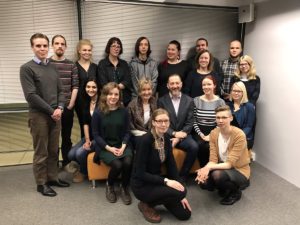I like visiting universities. Hip students stroll the corridors talking about alien things in alien ways. Time seems to be measured in eons. And the canteens sell homely food that’s easy on the pocket.
Universities like it when I visit them, too. For a brief moment, our worlds connect when I lecture and natter about trends and opportunities in the business realm – a galaxy far, far away from theirs.
Traditionally, the main benefit for companies of cooperating with academia has been access to new methodologies and the latest research results. Universities, for their part, have benefitted by getting business experience for their students through internships.
This symbiosis, so successful in the engineering and medical industries, seems to be somehow topsy-turvy in today’s translation world. Universities look to the industry for the latest innovations, and companies gain from working with academia mainly by finding new staff or freelance suppliers through internships.
At present, ranking systems are pushing universities towards being research institutions first and teaching facilities second. This makes it difficult to find academics with ties to the modern translation and localisation practice, which in turn hinders them in training graduates who are fully equipped to enter the working world.
At the same time, the private sector of the translation community struggles to see any business value in the current research topics. And since our industry mainly consists of SMEs, most LSPs view academic engagement as an unnecessary burden on the bottom line.
A chance to make a mark
In these turbulent times, collaboration efforts initiated by the industry tend to focus on easing translation graduates’ entry into the commercial world. The year is barely a month old and I have already been involved in two such projects.
Back in 2014, I created a curriculum for a new course offered to translation students at the University of Helsinki, Finland. The course, titled ‘Introduction to the Translation Industry,’ covers topics such as the global translation market, job opportunities in the industry, the technology we use, hands-on project management experience, and books written by industry practitioners. It also includes at least two visits to local translation companies.
For three years, I have been to Finland to teach parts of the course, and every year I have been joined in this voluntary work by management colleagues, translation and project management professionals from several Finnish LSPs, and renowned technology experts from our industry.
 This January, I once again spent a week in Helsinki, teaching a talented and inspiring group of soon-to-graduate MA students (pictured right). During my visit, the university staff confirmed that from next autumn onwards, the course will be included in their official MA programme. Indeed, the university now considers it a key part of their offering to attract students to study for a master’s in translation.
This January, I once again spent a week in Helsinki, teaching a talented and inspiring group of soon-to-graduate MA students (pictured right). During my visit, the university staff confirmed that from next autumn onwards, the course will be included in their official MA programme. Indeed, the university now considers it a key part of their offering to attract students to study for a master’s in translation.
I am pleased that, with this course, I have left a permanent footprint on the training of translators in Finland. By including it in its programme, the university will be obliged to run the course in the future, whether I find time to teach it or not.
Shaping – and being shaped by – the next generation
My other exciting project in January was GALA’s Rising Star 2017 contest. The largest trade association in the language industry, the Globalization and Localization Association organises this annual competition for students of translation, localisation and interpreting around the world.
In the past, students have been asked to produce a short video on a topic like “What will the ‘next-generation’ of the language industry look like?” This year, they were asked to submit an original essay considering the following statement:
“It’s not just about language anymore. What traits are needed to be a successful language industry professional?”
The organisers were delighted by the number of submissions: 35 students sent essays from 30 different universities located in 18 different countries.
As a member of the Rising Star selection committee, I had the pleasure of reading through the final top ten entries. Each member of the committee was asked to score the anonymous essays on how well they answered the question, how creative the ideas were, how the author used their voice to personalise the essay, and whether arguments were developed in a logical and organised fashion.
It was a joy to see so many contestants proudly describe their own universities’ efforts in translator training, and equally satisfying to hear from a couple of entrants who had already started working in the industry. I particularly loved reading about a teacher at the Middlebury Institute of International Studies at Monterey, California, telling their localisation students that “the job you’ll have in five years probably doesn’t even exist yet”
Ms. Gayane Saghatelyan, the writer of that essay, had clearly understood and embraced the strategic role language professionals have at the intersection of language, business and technology in our fast-moving world. Rather than introduce herself as a translator, she prefers to explain that her job is to “increase a company’s international revenue by creating a near-native experience for its users”. I find that refreshingly sanguine.
The winners of the Rising Star contest receive free registration, travel and lodging to attend GALA’s Language of Business conference in Amsterdam in March. Their presence at the event will serve as a reminder for the rest of us to boldly share their confident vision. We will do this by continuing to invest in the future of our profession and in those who train our future colleagues.




